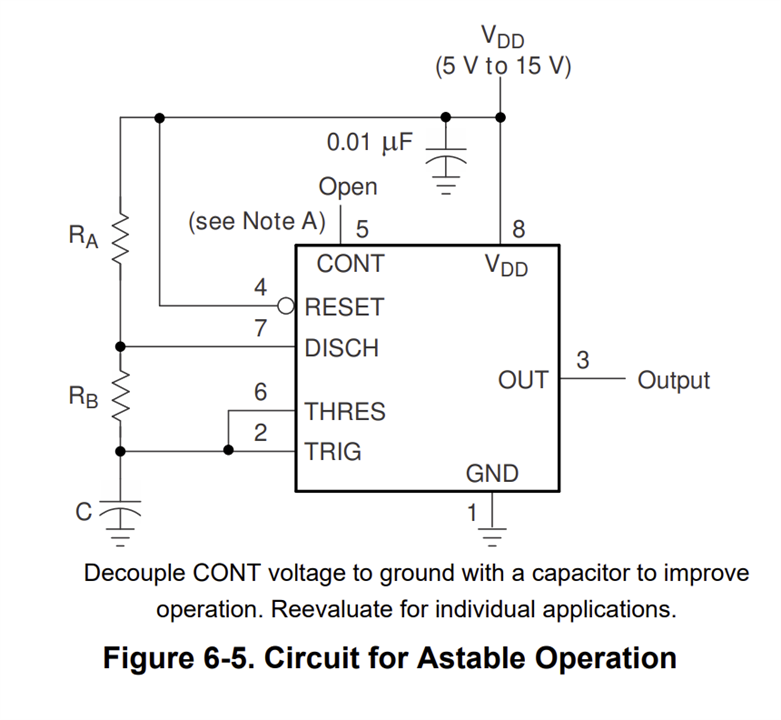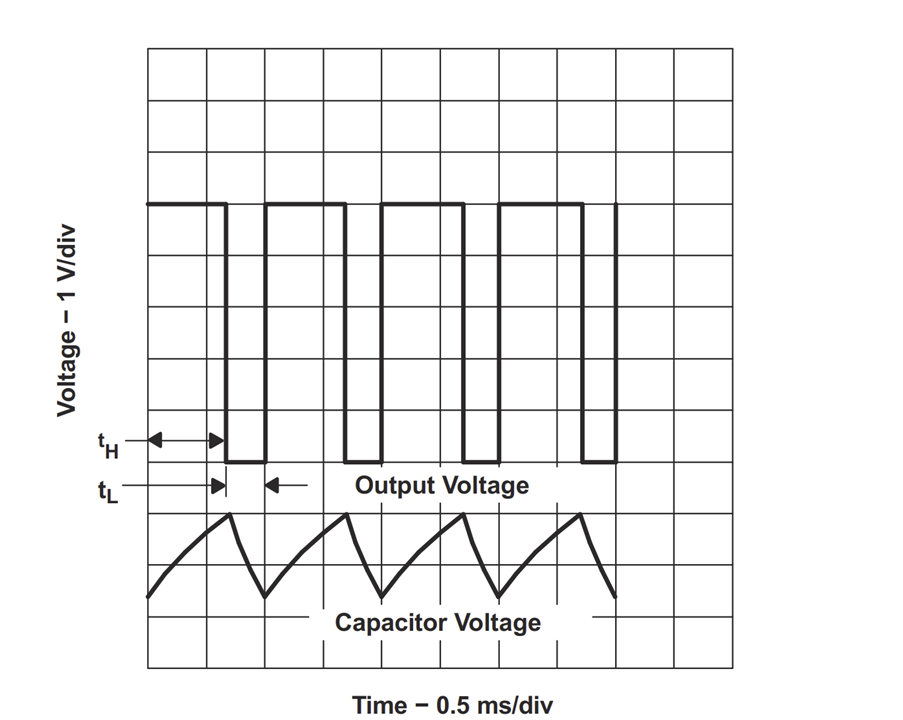Other Parts Discussed in Thread: TPS73250-EP
Tool/software:
Hello, I'm building a measurement circuit based upon the NE555 chip working in astable configuration.
I am bothered with duty cycle jitter on the output of about 70us on a 1811us pulse length.
Could you explain the reason and if possible propose a (or some) solution(s) in order to further reduce this?
Looking out to your reply,
Thanks!



